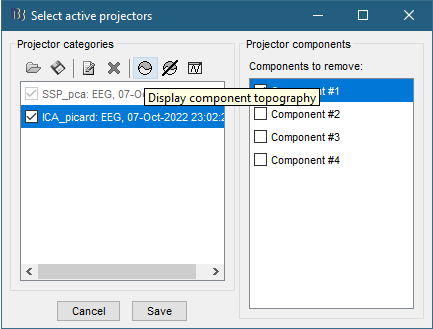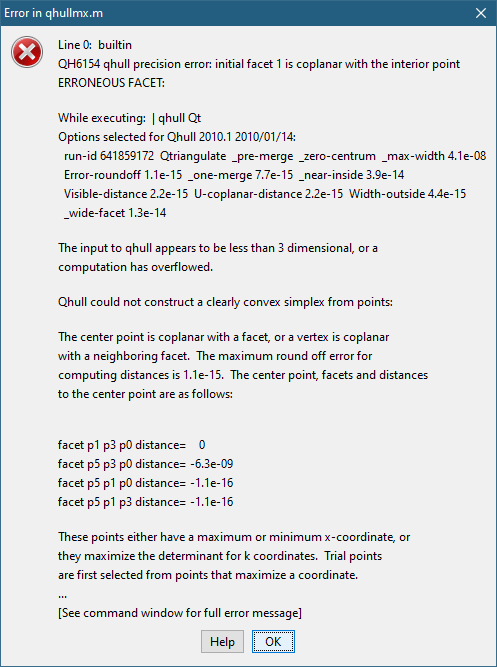Error using builtin
QH6154 qhull precision error: initial facet 1 is coplanar with the interior point
ERRONEOUS FACET:
While executing: | qhull Qt
Options selected for Qhull 2010.1 2010/01/14:
run-id 729577297 Qtriangulate _pre-merge _zero-centrum _max-width 4.1e-08
Error-roundoff 1.1e-15 _one-merge 7.7e-15 _near-inside 3.9e-14
Visible-distance 2.2e-15 U-coplanar-distance 2.2e-15 Width-outside 4.4e-15
_wide-facet 1.3e-14
The input to qhull appears to be less than 3 dimensional, or a
computation has overflowed.
Qhull could not construct a clearly convex simplex from points:
The center point is coplanar with a facet, or a vertex is coplanar
with a neighboring facet. The maximum round off error for
computing distances is 1.1e-15. The center point, facets and distances
to the center point are as follows:
facet p1 p3 p0 distance= 0
facet p5 p3 p0 distance= -6.3e-09
facet p5 p1 p0 distance= -1.1e-16
facet p5 p1 p3 distance= -1.1e-16
These points either have a maximum or minimum x-coordinate, or
they maximize the determinant for k coordinates. Trial points
are first selected from points that maximize a coordinate.
The min and max coordinates for each dimension are:
0: -0.4562 -2.225e-308 difference= 0.4562
1: -0.0003489 -2.225e-308 difference= 0.0003489
2: 0.8899 0.8899 difference= 1.417e-08
If the input should be full dimensional, you have several options that
may determine an initial simplex:
- use 'QJ' to joggle the input and make it full dimensional
- use 'QbB' to scale the points to the unit cube
- use 'QR0' to randomly rotate the input for different maximum points
- use 'Qs' to search all points for the initial simplex
- use 'En' to specify a maximum roundoff error less than 1.1e-15.
- trace execution with 'T3' to see the determinant for each point.
If the input is lower dimensional:
- use 'QJ' to joggle the input and make it full dimensional
- use 'Qbk:0Bk:0' to delete coordinate k from the input. You should
pick the coordinate with the least range. The hull will have the
correct topology. - determine the flat containing the points, rotate the points
into a coordinate plane, and delete the other coordinates. - add one or more points to make the input full dimensional.
Error in qhullmx
Error in convhulln (line 64)
[k,vv] = qhullmx(x', opt);
Error in channel_tesselate (line 48)
Faces = convhulln(coordC);
Error in tess_refine (line 97)
Faces = channel_tesselate(Vertices, isThresh);
Error in figure_topo>PlotFigure (line 520)
[Vertices, Faces] = tess_refine(Vertices, Faces, [], [], 1);
Error in figure_topo (line 27)
eval(macro_method);
Error in view_topography (line 379)
isOk = figure_topo('PlotFigure', iDS, iFig, 1);
Error in tree_callbacks>@(h,ev)view_topography(FileName,Modality,'2DSensorCap') (line 2706)
gui_component('MenuItem', jMenu, [], '2D Sensor cap', IconLoader.ICON_TOPOGRAPHY, [],
@(h,ev)view_topography(FileName, Modality, '2DSensorCap'));

